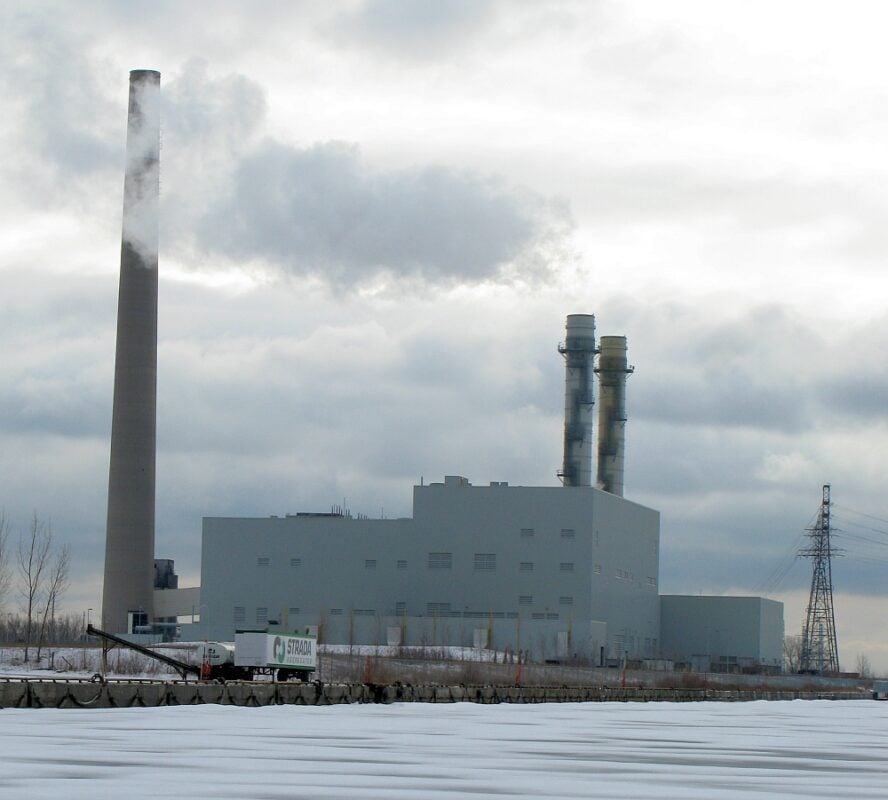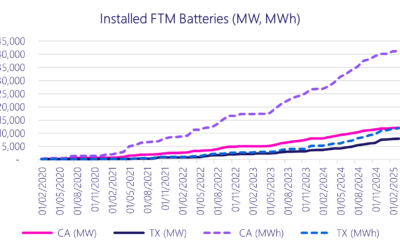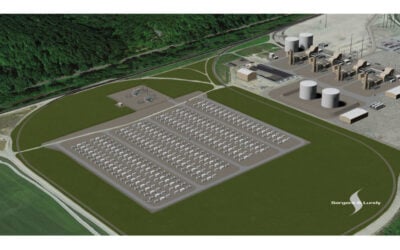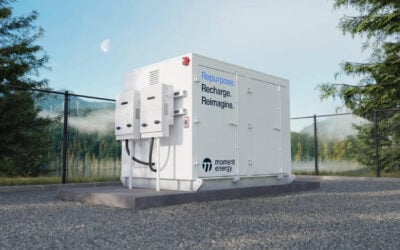
More similarities exist between the business models of trading energy from batteries and other, more ‘traditional’ types of asset than many people realise.
That’s the view of Jason Rioux, chief development officer at Canadian energy storage developer NRSTor, who was formerly director of business development at Ontario Power Generation.
Enjoy 12 months of exclusive analysis
- Regular insight and analysis of the industry’s biggest developments
- In-depth interviews with the industry’s leading figures
- Annual digital subscription to the PV Tech Power journal
- Discounts on Solar Media’s portfolio of events, in-person and virtual
In Rioux’s current role, he leads development activities on a broad range of low carbon energy storage projects, from fleets of behind-the-meter residential batteries, to the 250MW/1,000MWh Oneida project that looks set to begin construction soon.
In the past, NRSTor has also worked in non-lithium technologies, including flywheels and the world’s first commercially operating advanced compressed air energy storage (A-CAES) plant.
But when working at Ontario Power Generation (OPG) – in which the main shareholder is the province’s government – Rioux worked across different technologies and business models in the thermal generation space.
That included the repowering of Ontario’s coal power stations to run instead on natural gas and biomass (considered one of the single biggest emissions reduction steps taken anywhere in North America), and developing new natural gas resources, among many other things.
One of the gas plants in OPG’s portfolio is the 550MW Portlands Energy Centre, a CA$730 million (US$549.5 million) facility on which Rioux led commercial activities including all gas and power trading.
Energy storage business models are increasingly moving towards being based on trading energy. While long-term contracts for battery energy storage system (BESS) and other storage technologies are still being signed in some markets, asset owners and operators are looking towards merchant revenue opportunities to either supplement, or even underpin, the revenue stack. Energy trading and arbitrage is likely to be a big part of that.
“There’s more parallels than you’d imagine. In fact, most [energy] storage projects, one of the larger values they deliver is capacity value, and capacity value comes gas-fired power plants, oil plants, coal plants, those types [of asset],” Rioux said.
“Capacity value doesn’t come from renewables typically because the renewables produce when Mother Nature provides it, and you can’t tell Mother Nature to act at a moment’s need. All of the services that energy storage provide to a grid or a utility, or even a large energy user, or a small energy user, have very strong parallels to the thermal fossil type assets that they’re replacing.”
An industry without inventory
We often hear that without energy storage, power generation for the grid is an industry without inventory, where supply and demand traditionally have had to be matched in real-time. In reality, shoring up natural gas supply to a power plant requires a lot of effort and a lot of cost.
Making long-term investments into new fossil fuel generation, whether gas or fuel oil, start to look less competitive when all of this is taken into account.
From his experience of shutting down coal plants to be replaced by gas for Ontario, Rioux said that while coal plants would have stockpiles of fuel onsite or nearby, gas plants do not.
“So there’s a huge energy storage investment that’s completely hidden, anytime you build a gas plant. You have to build gas storage somewhere and you have to build a pipeline network, to be able to flow your molecules of natural gas to your power plant exactly when you need it. That comes with a huge cost and it’s almost like you’re building two assets to get a capacity value.”
These would represent an asset investment with perhaps a 50-year or 100-year long-term outlook, and is also “not cheap” to do, Rioux said, with one of Ontario’s last new build gas plants paying roughly CA$50 million a year in gas service fees, for example.
“That’s not including the gas it burns, that’s just having space in the ground and space in pipes reserved for your use and no one else can use it, because you might need to use it in a moment’s notice. And gas trades on a daily basis. If you want to buy molecules of natural gas, and you want them for today, you have to buy them yesterday at 10 o’clock in the morning, that’s when the market trades.”
Natural gas is being used to help balance the integration of variable renewable energy (VRE) production from wind and solar, but this need for advance notice for energy trading makes it a less than ideal resource, especially when compared to dispatchable capacity from energy storage, Rioux argued.
In parts of the northeastern US, this need for inventory has seen some regions decide to instead put in oil tanks for storage and burn oil on days of highest peak demand.
“So basically, now you’re shutting down coal plants and building oil plants. You can see how it doesn’t make any sense to make long-term investments in those kinds of assets, and storage of all types, batteries, long-duration storage, whether it’s compressed air or pumped hydro, and various other technology types that are carbon-free, emissions-free; is a logical place to make our next big capital investments, as a world.”
Jason Rioux was among the interviewees in our recent look at the growth of energy storage in Canada’s two leading provinces, Ontario and Alberta, published in our quarterly journal PV Tech Power (Vol.35). You can read an extract of that piece on the site here, or read the full article with an Energy-Storage.news Premium subscription.






